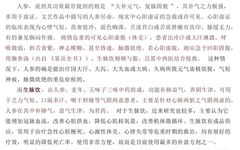
Haven’t followed us yet? Tap here—


Introduction: Ginseng (Panax ginseng C. A. Mey) is a perennial herb that prefers cool, shady environments. Its leaves lack stomata and palisade tissue, making it unable to retain moisture; temperatures above 32 degrees Celsius can scorch the leaves. It typically flowers in three years and bears fruit in five to six years, with flowering occurring from May to June and fruiting from June to September. Ginseng grows in mixed coniferous and broadleaf forests dominated by red pine at altitudes of several hundred meters between latitudes 33 to 48 degrees north, primarily found in Northeast China, Korea, Japan, and eastern Russia. Ginseng is also known as Huang Shen, Di Jing, Shen Cao, and the King of Herbs, and is one of the renowned “Three Treasures of Northeast China.”
Medicinal Ginseng

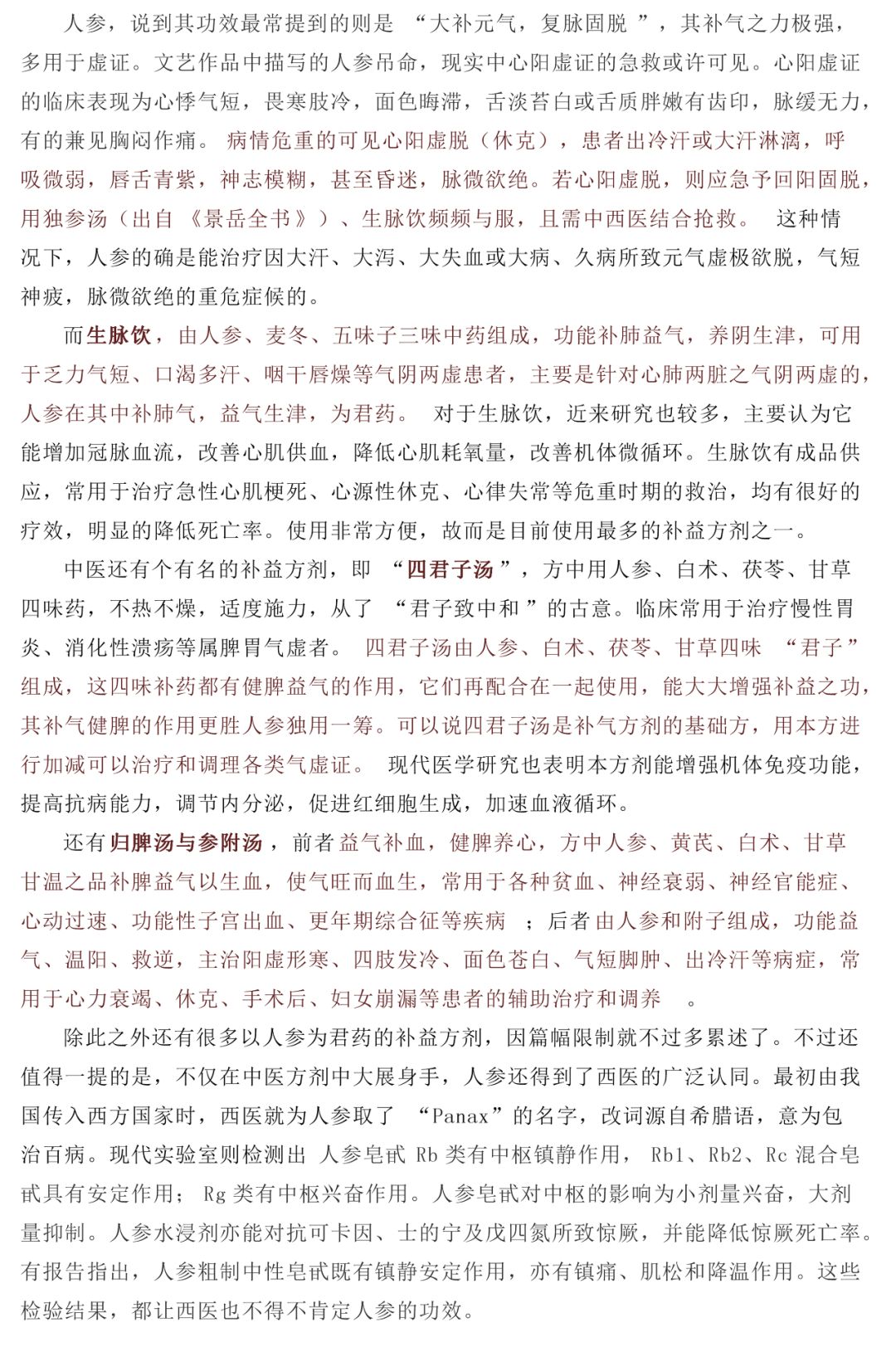
Ginseng Panax ginseng C. A. Mey.
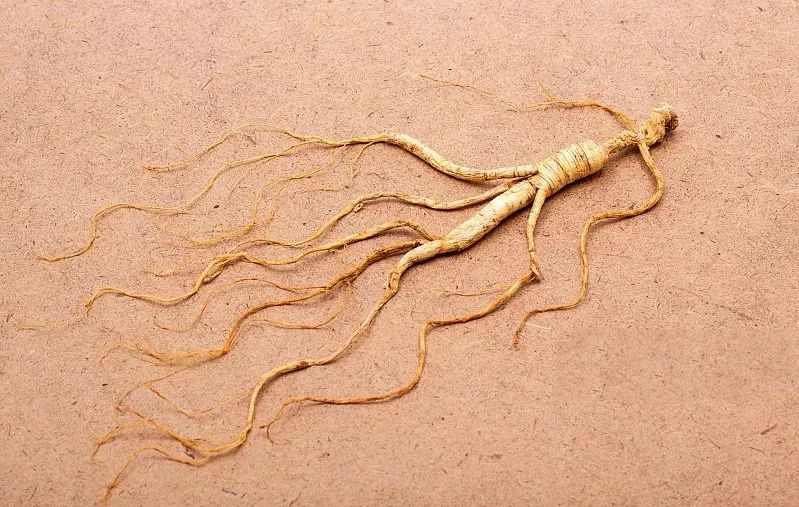
Ginseng《Shen Nong Ben Cao Jing》
【Source】 Ginseng, also known as mountain ginseng, garden ginseng, and Korean ginseng (produced in the Korean Peninsula), is the root of the Araliaceae family plant. It is primarily produced in Northeast China and Korea, usually harvested in October to November each year. Depending on the processing method, it can be made into “red ginseng,” “sun-dried ginseng,” “sugar ginseng,” “ginseng hairs,” and “strong ginseng.”
【Aliases】 Gui Gai, Shen Cao, Huang Shen, Bang Chui, etc.
【Properties and Flavor】 Warm in nature, sweet and slightly bitter in taste.
【Meridians Entered】 Enters the Spleen, Lung, Heart, and Kidney meridians.
【Functions and Indications】 Greatly tonifies Qi, restores pulse, strengthens the Spleen and benefits the Lung, calms the spirit and enhances intelligence, generates fluids and alleviates thirst. Used for symptoms of Qi deficiency, cold limbs, weak pulse, Spleen deficiency with poor appetite, Lung deficiency with cough and wheezing, fluid damage with thirst, internal heat with diabetes, Qi and blood deficiency, prolonged illness with weakness, palpitations, insomnia, impotence, and cold uterus. It is indicated for fatigue, poor appetite, lethargy, loose stools, shortness of breath, chest tightness, palpitations, impotence, frequent urination, and diabetes.
【Components】 Contains various ginsenosides, volatile oils, ginseng polysaccharides, low molecular esters, amino acids, ginseng acid, choline, vitamin B1, vitamin B2, niacin (also known as vitamin B3), etc.
【Applicable Population】 Modern research confirms that this herb can enhance the excitatory processes of the cerebral cortex, improve the body’s stress response, and has anti-aging, anti-fatigue, anti-shock, cardiotonic, and immune-enhancing effects. Additionally, it has anti-inflammatory, anti-allergic, anti-tumor, and blood sugar-lowering effects. Clinically, it is mainly used to treat shock, cor pulmonale, diabetes, post-chemotherapy for leukemia, sexual dysfunction, viral myocarditis, tumors, and neurasthenia.
【Precautions】 Avoid use in cases of excess heat or heat syndrome. It should not be taken with radishes; contraindicated with Rhizoma et Radix Rhei and Wu Ling Zhi. Long-term use may lead to adverse reactions, including acute poisoning with bleeding.
【Dosage and Administration】 Decoction, 3 to 9 grams; high doses can reach 30 grams. Soak in alcohol as needed; grind into powder and take 2 grams.
《Shen Nong Ben Cao Jing》 is the earliest existing pharmacological text in China, and the name “ginseng” is first recorded in this text, indicating the long history of its medicinal use. The text states, “Ginseng, sweet and slightly cold in nature, is used to tonify the five organs, calm the spirit, stabilize the soul, stop palpitations, eliminate evil Qi, brighten the eyes, and enhance intelligence. Long-term use can lighten the body and prolong life. Also known as Ren Xian and Gui Gai. Grows in mountain valleys.”
The remarkable efficacy of wild mountain ginseng is evident, but the ginseng we commonly use today is mostly cultivated garden ginseng and forest ginseng. Wild mountain ginseng still commands a high price. After all, ginseng has strict requirements for its growing environment, including temperature, humidity, and soil, and it grows slowly, taking at least 5 to 10 years to reach medicinal specifications. In Northeast China, ginseng is referred to as “Bang Chui” because, during the early Qing Dynasty, there were regulations prohibiting common people from harvesting ginseng in the mountains, leading farmers to avoid using the word “ginseng.” The shape of ginseng resembles a pestle used for pounding clothes, hence the nickname “Bang Chui.”
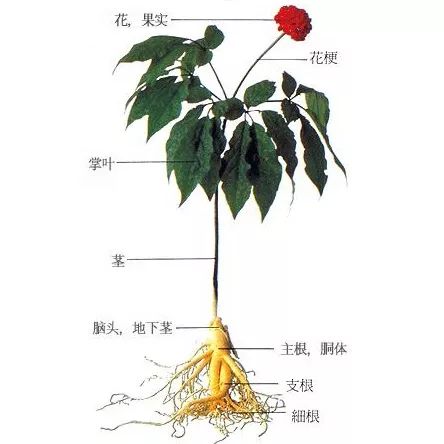
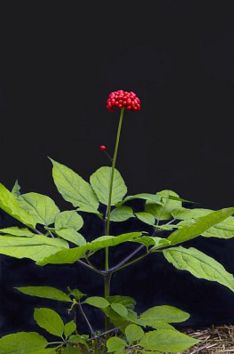
Ginseng Plant


Dietary and Practical Applications

Ginseng is the primary herb for treating internal injuries due to deficiency. It is widely used in medicinal food products, and various cooking techniques such as stir-frying, frying, roasting, blanching, stewing, boiling, steaming, and soaking in alcohol can be employed.
The processing of ginseng uses the immersion method, where water is used to process the raw material. However, some active components of certain raw materials dissolve in water, and improper processing can easily lead to loss, so appropriate processing methods should be selected based on the different characteristics of the raw materials. Raw materials that should not be soaked in water need to be immersed in liquid to soften without losing active components; ginseng is often treated with milk: using cow’s milk or goat’s milk.
Because of its well-known Qi tonifying properties, ginseng is most commonly found in medicinal foods that benefit Qi, suitable for Qi deficiency syndromes, such as Ginseng Black Chicken Soup. There is also the ancient “Bing Zi Du Shen Soup” from the “Ten Medicinal Books,” which has the effects of tonifying Qi and blood, assisting Yang, and moistening the intestines for those with physical weakness or the elderly. The original text states for Bing Zi Du Shen Soup: “After stopping bleeding, this medicine tonifies. Use two taels of ginseng (remove the skin), boil with two cups of water and five jujubes until one cup remains, and drink it in small sips. Afterward, take other medicines to eliminate the root cause. The efficacy is established by the three talents, and the loss of Yin, Yang, and blood can be restored with ginseng and five jujubes; only then will one know the strength of Qi.”
Ginseng Dietary Therapy
Esophageal Cancer
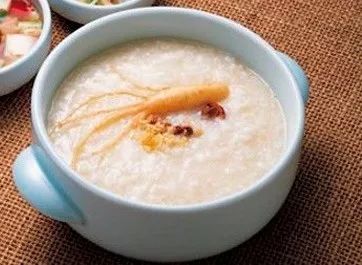
【Clinical Manifestations】
Difficulty swallowing, food obstruction, with common syndromes being phlegm-stasis obstruction and deficiency phlegm obstruction. The characteristics of phlegm-stasis obstruction include chest tightness, vomiting upon eating, and excessive phlegm; the characteristics of deficiency phlegm obstruction include pale complexion, dry mouth and throat, facial swelling, emaciation, and inability to eat.
【Dietary Therapy Recipe】
Ginseng and Reed Root Persimmon Frost Porridge: 10 grams of ginseng (sliced or minced), 150 grams of fresh reed root (cut into small sections), 20 grams of persimmon frost, and 60 grams of japonica rice. Boil the fresh reed root in water for 30 minutes, strain to obtain 500 ml of juice, add ginseng and japonica rice, and cook into a thin porridge, then dissolve in persimmon frost for consumption, 1 to 2 times daily.
Menstrual Pain
Qi and blood deficiency
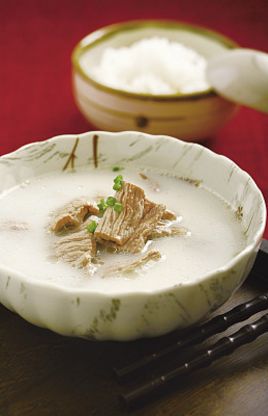
【Clinical Manifestations】
Dull pain in the lower abdomen during or after menstruation, preference for pressure, scanty menstrual flow, pale color, thin texture, fatigue, dizziness, palpitations, insomnia with vivid dreams, pale complexion, pale tongue, thin white coating, and weak pulse.
【Dietary Therapy Recipe】
Ginseng and Angelica Lamb Stomach: 6 grams of ginseng, 15 grams of angelica, 10 grams of Cistanche, 250 grams of lamb, 150 grams of lamb stomach, 10 grams of fermented black soybeans, and appropriate amounts of green onion, salt, and wine. Boil ginseng, angelica, Cistanche, and fermented black soybeans for 20 minutes, strain to retain about 80 ml of juice. Mince the lamb and mix it with the medicinal juice and appropriate amounts of green onion, salt, and wine, stuff it into the lamb stomach, tie it up, and steam for 2 to 3 hours to complete.
Deafness
Kidney essence deficiency
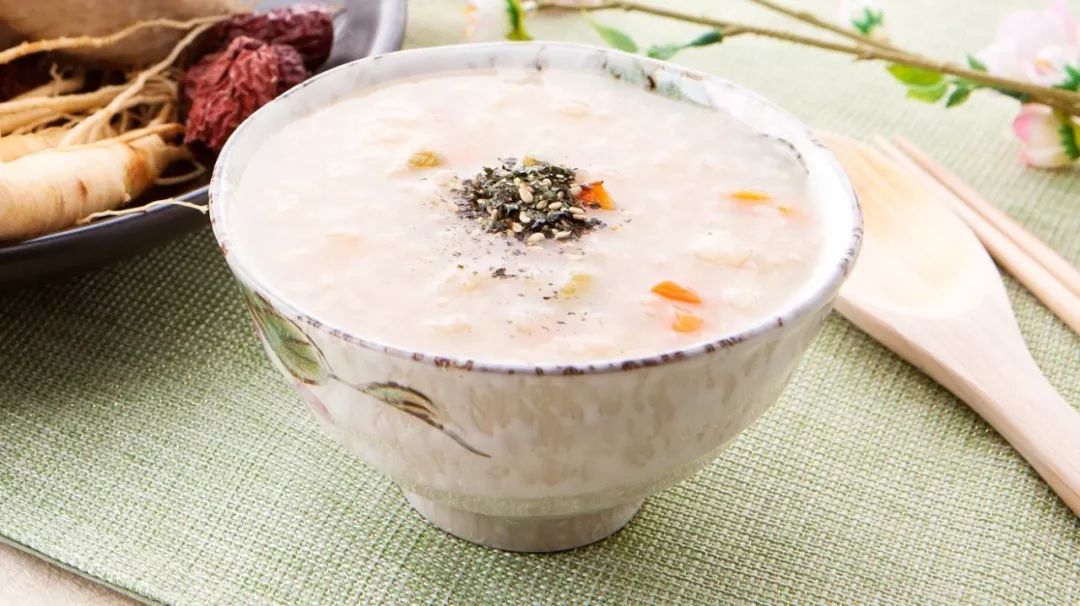
【Clinical Manifestations】
Gradual hearing loss in both ears, accompanied by tinnitus, worse at night, insomnia, dizziness, weakness in the lower back and knees, frequent nocturnal emissions, excessive thirst, red tongue with little coating, and weak pulse.
【Dietary Therapy Recipe】
Ginseng Porridge: 1 gram of ginseng, 10 grams of Siler, 30 grams of magnetite, 1 pair of pig kidneys, and 100 grams of japonica rice. Grind ginseng into fine powder, wrap magnetite in cloth, slice the pig kidneys, and add to the japonica rice and Siler with appropriate amounts of water, cooking until the rice is done.
Constipation
Qi deficiency constipation
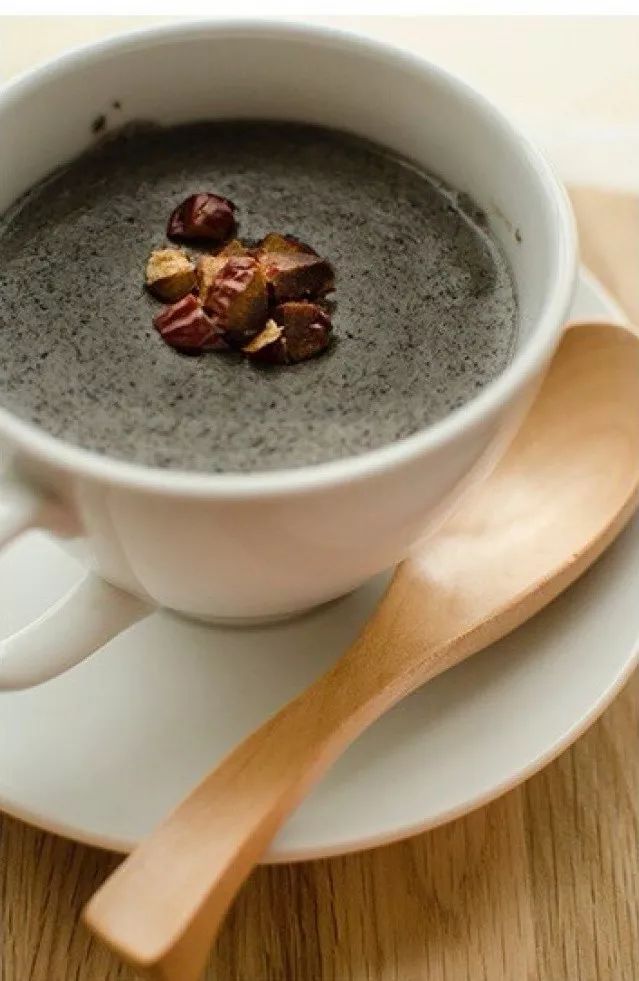
【Clinical Manifestations】
Despite the urge to defecate, there is difficulty in expelling, with effort leading to sweating and shortness of breath, and fatigue after defecation, pale complexion, fatigue, and weakness. The tongue is pale and tender, with a white coating, and the pulse is weak.
【Dietary Therapy Recipe】
Ginseng Black Sesame Drink: 5 to 10 grams of ginseng, 15 grams of black sesame, and appropriate amount of sugar. Grind the black sesame into a paste, boil ginseng in water, strain to retain the juice, add black sesame and sugar, and boil to serve.

Original: Liu Zhiyong, You Weiping
Source: Health Preservation Right Path
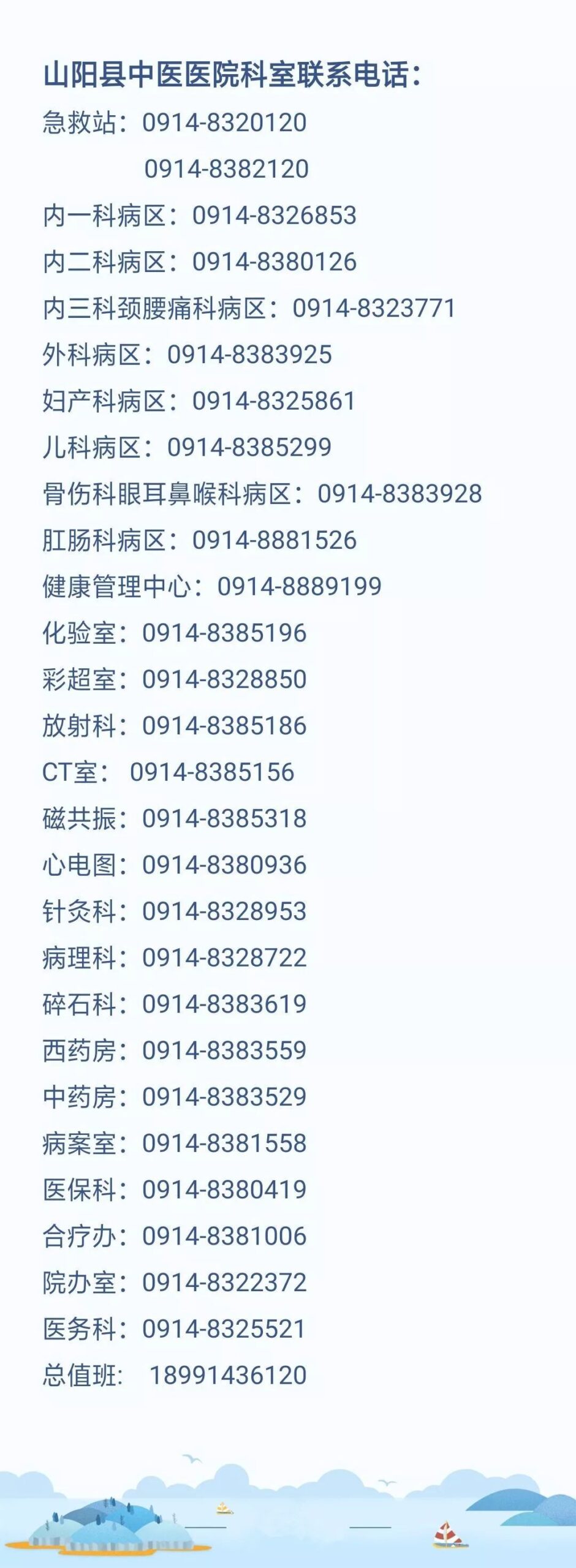

Shanyang County TCM Hospital Service Account

Shanyang County TCM Hospital Subscription Account

